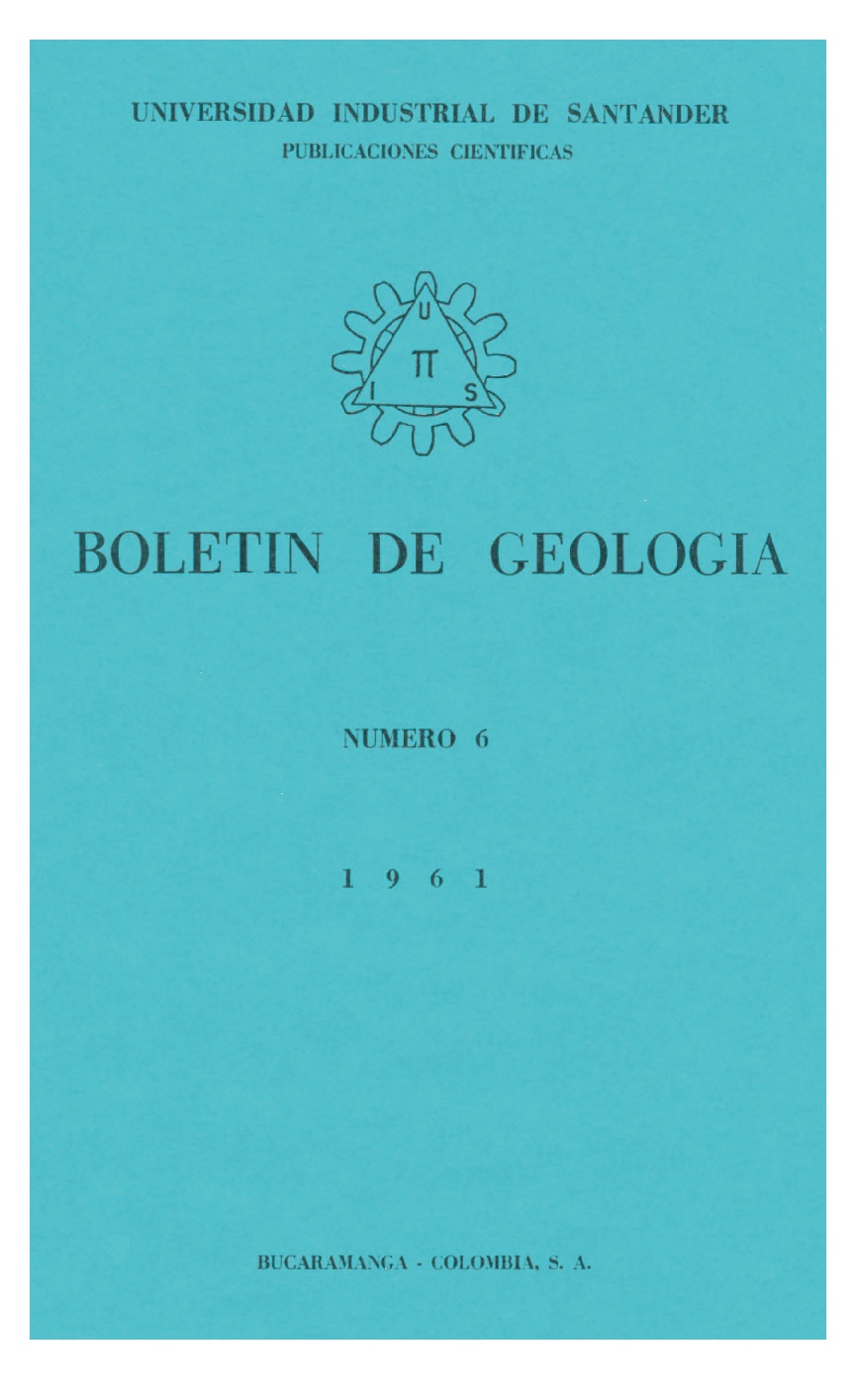Published 1961-04-06
How to Cite
Abstract
In this preliminary notes a systematic distribution is given for the material of the family Megatheriidae (Edentata, Xenarthra) that is deposited in Colombia collections. All the examined remains belong to the genus Eremotherium. A large amount of such material had been previously referred as Megatherium however, until now, no element have been recognized that migth be properly assigned Lo the latter genus. The skeleton discovered at Villavieja by Stirton and Royo Gomez belongs, judging by the articular surfaces of the patena and the carpal arrangements, to E. (Eremoo therium) rusconii. By the first time the presence of the subgenerus Pseudoeremotherium is recorded from Colombia as represented by two new species; E. (Pseudoeremotherium) robustum (type locality: terrace at Fusagasugá, Depto. de Cundinamarca; upper (?) pleistocene) and E. (Pseudoeremotherium) cucutense (type locality: vicinity of Cricuta, Depto. Norte de Santander; upper (?) pleistocene). The first species is distinguishable by the heaviness of the posterior portion of skull and by its mandibular morphology, the shape of the losver border particulary gives a striking heaviness to the dentary boue. E. (Pseudoeremotherium) cucutense is a small species with elongated skull, its hinder cranial portion broader than higher and greatly developed union. The dentary boue shows some intermediate characters between E. (Pseudoeremotherium) lundi and E. (Pseudoeremotherium) robustum. The humerus associated with the cranial remains from Cécuta is characterized by the greatly developed deltoid ridge and the morphology of the distal end. The great size of the olfatory lobes of this species as well as the Brazilian one leads to think in a great development of the olfatory sense. Taking into account ail the assernbled known facts concerning the genus Ereinotherium, it is possible to affirm that the genus has suffered in the intertropical regions a high diversification at the species level, as it is unconceivable to keeps it as one species unit with such great znorphological variability.
RESUME. — Dans cette étude preliminaire sur les Edentata Xenarthra on fait la révision des pièces de la famille Megatheriidae se trouvant dans plusieurs collections de la Colombie. Tous les restes examinés appartiennent au genre Eremotherium. Bien qu'une grande partie du matériel ait été attribuié au genre Megatherium. Le squelette trouvé par Stirton et Royo Gémez à Villavieja correspond à E. (Eremotherium) rusconii d'après la forme et disposition de la facette rotulienne et d'après la structure du carpe. Du subgenre Pseudoeremotherium jusqu'à présent inconnu en Colombie, on décrit deux spècés nouvelles: E. (Pseudoeremotherium) robusturn, provenant de la terrasse de Fusagasue (Departarnento de Cundinamarca) caractérisée par la région postérieure du crâne, qui est très robuste et par la morphologie de la mandibule, très spécialment par le contour inférieur du corps mandibulaire. E. (Pseudoeremotherium) cucutense, trouvé aux alentours de Cticuta (Depto. Norte de Santander), correspond à une forme petite à crâne allongé avec sa partie postérieure plus large que haute et avec un devdoppement extraordinaire de la tuberosité cervicale. En outre, la mandibule présente quelques caractères intermediaires entre E. (Pseudoeremotherium) lundi et E. (Pseudoereneotherium) robustum. L'humérus trouvé au même gisement d'où provient le crâne d'E. (Pseudoeremothorium) cucutense, se caractérise par le developpement extraordinaire de la crête deltoides et par la morphologie de l'extreznité distale. Le degré de development des lobes olfatifs dans E. (Pseudoeremotherium) lundi et E. (Pseudoeremotherium) cucutense fait penser que le sens de l'odorat dans ces deux espèces était assez poussé. D'après les connaissances actuelles sur le genre Eremotherium on peut conclure que dan les régions intertropicales le genre Eremotheriurn a acquis une forte diversification specifique, car il est difficile de croire à l'existence d'une unifique espèce avec une si grande variabilité morphologique.
